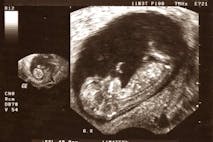New @ProPublica stories about women who have died after bad #medicalcare are disturbing, but this advocacy journalism misses the whole story: how pro-life doctors like us are demanding but not finding medical clarity from @ACOG

ProPublica exploits another mother’s death by ‘substandard medical care’ in attempt to blame pro-life law
ProPublica exploits another mother’s death by ‘substandard medical care’ in attempt to blame pro-life law
ProPublica has continued its “Life of the Mother” series in which it highlights the tragic deaths of pregnant women whom they claim died because of pro-life laws in certain states. Previously, ProPublica reported on the deaths of Candi Miller (Georgia), Amber Thurman (Georgia), and Josseli Barnica (Texas), dishonestly attempting to blame their deaths on pro-life laws instead of on negligence, malpractice, potential complications of abortion, or substandard medical care.
Now, ProPublica is highlighting a fourth woman’s tragic and unnecessary death — that of Nevaeh Crain, a teen who tragically died along with her six-month preborn daughter just a year ago, in 2023, and who was excited to welcome her first baby.
ProPublica noted in its previous article that “Texas has a committee of maternal health experts who review” maternal deaths, but that committee’s “reports on individual cases are not public and members… have not finished examining cases from 2021.” So, in order to tell this story from 2023, ProPublica “condensed more than 800 pages of Crain’s medical records into a four-page timeline in consultation with two maternal-fetal medicine specialists” who appear to remain unnamed. Then, “reporters reviewed it with nine doctors, including researchers at prestigious universities, OB-GYNs who regularly handle miscarriages, and experts in emergency medicine and maternal health.”
ProPublica also made clear in its previous article that it is looking for information “about the consequences of abortion bans,” making it appear as if its reporters aren’t doing any sort of comparison by searching for similar occurrences in states that do not restrict abortion. Even the Associated Press admitted earlier this year that its own analysis revealed: “Serious violations that jeopardized a mother or her fetus’ heath occurred in states with and without abortion bans….”
At a Glance:
Nevaeh Crain, an 18-year-old who was happy to be six months pregnant, was misdiagnosed with strep and a urinary tract infection, seeking care at two different hospitals who dismissed her despite signs of sepsis.
The medical standard of care was reportedly not followed, and the doctor who discharged her, when she was too weak to walk, had a history of “missing infections” in other patients.
Both the doctors consulted by ProPublica and pro-life doctors who have spoken out believe Nevaeh and her baby could have possibly been saved if she had not received substandard medical care.
Current Texas law allows for induced abortions in medical emergencies under the physician’s “reasonable medical judgment.”
ProPublica turned largely to pro-abortion experts for commentary and is only reportedly seeking cases of potentially abortion-related maternal death in states with so-called “abortion bans.”
Sepsis is a real danger to patients and more efforts must be made to spot the signs earlier.
Nevaeh’s story
According to ProPublica, Crain and her mother, Candace Fails, both said they were pro-life, and Crain said she only supported abortion in cases of rape or life-threatening illness. When Crain got pregnant, she and Fails were both excited to welcome the new baby, a girl whom Crain had named Lillian.
On October 28, 2023, day before she died, a baby shower was held for Crain. She woke up with a headache and felt nauseous. Despite the excitement of the event, she had a hard time keeping her eyes open, and eventually was taken to Baptist Hospitals of Southeast Texas. After sitting in the waiting room for four hours, she began vomiting; a nurse practitioner administered a strep test, which came back positive.
According to ProPublica, “The first hospital diagnosed her with strep throat without investigating her sharp abdominal cramps” even though she was pregnant. Crain was reportedly given antibiotics and was discharged, but the medication didn’t help.
She woke up her mother at 3:00 am saying she was in a lot of pain; Fails drove her to a different hospital — Christus Southeast St. Elizabeth. There, at 4:20 am, she was seen by Dr. William Hawkins, an OB/GYN, who found that Crain had a temperature of 102.8, and an “abnormally high pulse.” ProPublica writes (emphases added):
Her vital signs pointed to possible sepsis, records show. It’s standard medical practice to immediately treat patients who show signs of sepsis, which can overtake and kill a person quickly, medical experts told ProPublica. These patients should be watched until their vitals improve. Through tests and scans, the goal is to find the source of the infection. If the infection was in Crain’s uterus, the fetus would likely need to be removed with a surgery.
In a room at the obstetric emergency department, a nurse wrapped a sensor belt around Crain’s belly to check the fetal heart rate. “Baby’s fine,” Broussard told Fails, who was sitting in the hallway.
After two hours of IV fluids, one dose of antibiotics, and some Tylenol, Crain’s fever didn’t go down, her pulse remained high, and the fetal heart rate was abnormally fast, medical records show. Hawkins noted that Crain had strep and a urinary tract infection, wrote up a prescription and discharged her.
In other words, Hawkins did not follow standard medical practice, though she was in an obstetric emergency department.
This is, frankly, shocking. Crain’s fever was not responding to fever-reducing medications (even a non-physician should know that this is a massive red flag for a serious problem), and mother and child’s heart rates were still “abnormally fast.” As if this shouldn’t have been evident enough that something else was seriously wrong, at this point, Crain reportedly couldn’t even walk on her own. “Her daughter was breathing heavily, hunched over in pain, pale in the face,” wrote ProPublica.
According to “all of the doctors who reviewed Crain’s vital signs for ProPublica,” Crain should have stayed in the hospital. ProPublica wrote: “’She should have never left, never left,’ said Elise Boos, an OB-GYN in Tennessee.” How interesting that an OB/GYN from a pro-life state like Tennessee is quoted here, agreeing that Crain should have been hospitalized immediately.
Sadly, ProPublica notes that Hawkins, the doctor who discharged Crain, “had missed infections before,” adding (emphases added):
Eight years earlier, the Texas Medical Board found that he had failed to diagnose appendicitis in one patient and syphilis in another. In the latter case, the board noted that his error “may have contributed to the fetal demise of one of her twins.” The board issued an order to have Hawkins’ medical practice monitored; the order was lifted two years later. (Hawkins did not respond to several attempts to reach him.)
By 7:00 am on the 29th, the day of her death, she was bleeding and her mother suspected a miscarriage, according to ProPublica. Crain and Fails returned to the same hospital — Christus St. Elizabeth — where an ultrasound was performed and IV antibiotics were (finally) administered. But by this point, Crain’s lips were reportedly “drained of color,” and she said she felt like she was going to faint.
Crain was being seen by on-duty OB/GYN, Dr. Marcelo Totorica. ProPublica writes:
Around 9:30 a.m., the OB on duty, Dr. Marcelo Totorica, couldn’t find a fetal heart rate, according to records; he told the family he was sorry for their loss.
Standard protocol when a critically ill patient experiences a miscarriage is to stabilize her and, in most cases, hurry to the operating room for delivery, medical experts said. This is especially urgent with a spreading infection. But at Christus St. Elizabeth, the OB-GYN just continued antibiotic care. A half-hour later, as nurses placed a catheter, Fails noticed her daughter’s thighs were covered in blood.
Half an hour later, Crain was having contractions, but the doctor didn’t want her moved, and L&D nurse Melissa McIntosh wrote, “Dr. Totorica states there is a slight chance patient may need to go to ICU and he wants the bedside ultrasound to be done stat for sure before admitting to room.” Though there are other methods of detecting a fetal heartbeat, ProPublica states that Totorica had already performed one ultrasound and wanted a second, claiming that the doctor’s reasoning was because there was no ultrasound image preserved yet for the medical record.
“The state’s laws banning abortion require that doctors record the absence of a fetal heartbeat before intervening with a procedure that could end a pregnancy. Exceptions for medical emergencies demand physicians document their reasoning,” writes ProPublica.
At 10:40 am, Crain’s blood pressure began to drop, and Totorica was paging for an emergency team. At 11:00 am, an ultrasound was performed, with a nurse writing, “Bedside ultrasound at this time to confirm fetal demise per Dr. Totorica’s orders.”At 11:20 am, Crain was taken to the ICU, with her mother by her side. Seven hours had passed since she first showed signs of sepsis, with, reportedly, no aggressive interventions whatsoever.
Initially, Fails gave permission for a dilation and curettage or c-section to be performed, but doctors decided not to move forward. They suspected that Crain not only had become septic, but was experiencing disseminated intravascular coagulation, a condition in which blood clotting becomes overactive. Crain was bleeding internally.
Nevaeh’s mother cried and begged her to be strong as she was going in and out of consciousness. ProPublica reported that while in the ICU, Crain abruptly sat up from the cot, and old, black blood gushed from her mouth and nose. The outlet doesn’t say what happened after this point, or if any other interventions were performed — but what is known is that Crain’s organs were shutting down, and tragically, she died.
Today, she would be 20 years old. “She was bleeding,” Fails told ProPublica. “Why didn’t they do anything to help it along instead of wait for another ultrasound to confirm the baby is dead?”
Could Nevaeh have been saved?
The autopsy called Crain’s death “natural,” and related to “complications of pregnancy,” while adding that she was “repeatedly seeking medical care for a progressive illness.”
ProPublica argued that not only could Crain have potentially been saved with better care, but her baby could have been saved, also. “If she had needed an early delivery, the hospital was well-equipped to care for a baby on the edge of viability,” ProPublica noted. “In another scenario, if the infection had gone too far, ending the pregnancy might have been necessary to save Crain.”
ProPublica seems confused. An early delivery is one way of ending the pregnancy. One does not have to intentionally kill the child to end a pregnancy. Of course, pro-life doctors have been saying this for years while doctors with a pro-abortion agenda seem to insist that direct killing is a must, or they act as if treating a miscarriage/early delivery/emergency c-section is all under the category of “abortion.” It benefits the pro-abortion agenda to make the public think that early delivery = “abortion,” when the law is clear that legally, “abortion” is intentional killing.
Dr. Ingrid Skop, a board-certified Texas OB/GYN and VP of Medical Affairs with the Charlotte Lozier Institute, reacted to the report in a statement to Live Action News, agreeing that the standard of care wasn’t followed in Crain’s case (emphasis added):
Nevaeh tragically received substandard medical care when she presented to two Beaumont, Texas, hospitals experiencing an obstetric emergency. Despite complaining of abdominal pain at six months gestation, she was discharged with a diagnosis of strep throat without an obstetric evaluation.
Quality medical care and federal EMTALA laws require evaluation and stabilization of the unborn baby as well as the mother, a service this hospital with a level 3 NICU had the ability to provide.
Skop continued:
When she presented to another hospital with ongoing symptoms, her medical record reportedly showed signs of sepsis, which should have warranted immediate admission for IV antibiotics and evaluation to determine if delivery was necessary to treat the infection. At her reported gestational age, it is possible her unborn child was viable and might have survived delivery, because this hospital also had a level 3 NICU. Instead, she was discharged.
Article continues below
Dear Reader,
In 2026, Live Action is heading straight where the battle is fiercest: college campuses.
We have a bold initiative to establish 100 Live Action campus chapters within the next year, and your partnership will make it a success!
Your support today will help train and equip young leaders, bring Live Action’s educational content into academic environments, host on-campus events and debates, and empower students to challenge the pro-abortion status quo with truth and compassion.
Invest in pro-life grassroots outreach and cultural formation with your DOUBLED year-end gift!
Texas Alliance for Life also issued a press release, stating, “… the latest Induced Termination of Pregnancy (ITOP) report from Texas Health and Human Services… shows that doctors in Texas have performed 119 abortions to save pregnant women’s lives or health under the medical emergency exception of Texas pro-life laws during the first 24 months after the United States Supreme Court overturned Roe v. Wade in the Dobbs decision. The latest numbers released today show that, in June 2024, three such abortions were reported. To date, no doctor has been prosecuted, sued, or sanctioned for any of those abortions, providing clear evidence that Texas’ pro-life laws are allowing physicians to perform abortions to protect women’s lives and health.”
Texas Alliance for Life Communications Director Amy O’Donnell said, “ProPublica is attempting to place blame where it doesn’t belong. Josseli’s and Nevaeh’s deaths were preventable, and Texas law allowed their physicians to exercise their reasonable medical judgment to perform life-saving abortions before the threat to their lives became imminent.”
This, of course, leads us to the next point: if these are the facts, how is ProPublica claiming with a straight face that the state’s pro-life laws are to blame?
Are pro-life laws to blame?
ProPublica makes its ideological bias very clear in this article, and even previously admitted that it is only looking for such cases in states “with abortion bans.” Though it is never clear that Crain was denied care because doctors were afraid to act due to violating Texas law, that is the message ProPublica wants readers to believe.
“This is how these restrictions kill women,” Dr. Dara Kass, a pro-abortion emergency room physician, told ProPublica. “It is never just one decision, it’s never just one doctor, it’s never just one nurse.” Kass is a strong supporter of abortion and of self-managed abortion pills, and thinks her fellow ER physicians should be aware that they will see more abortion pill clients and learn to properly care for them.
Dr. Jodi Abbott, an associate professor of obstetrics and gynecology at Boston University School of Medicine, added to the speculation, positing about what patients like Crain are thinking. “Am I being sent home because I really am OK? Or am I being sent home because they’re afraid that the solution to what’s going on with my pregnancy would be ending the pregnancy, and they’re not allowed to do that?”
And as if ProPublica’s agenda weren’t already clear, Sara Rosenbaum, “a health law and policy professor emerita at George Washington University,” spelled it out in hyperbolic, dramatic fashion: “Pregnant women have become essentially untouchables.” Is she serious?
ProPublica even quoted “Dr. Tony Ogburn, an OB-GYN in San Antonio,” who said, “Pretty consistently, people say, ‘Until we can be absolutely certain this isn’t a normal pregnancy, we can’t do anything, because it could be alleged that we were doing an abortion.” Obviously, sepsis would be one of those “absolutely certain” cases, since it is life-threatening, and doctors would be expected to immediately intervene.
But Ogburn is more than “an OB-GYN in San Antonio.” He was a professor at the University of New Mexico, and sometime around 2012 or 2013 was “Chief Medical Officer at the UNM Sandoval Regional Medical Center, a… community teaching hospital of the University of New Mexico Health Sciences Center” (where between 2012 and 2014, summer camp students dissected the brains of late-term aborted children obtained from Southwestern Women’s Options in New Mexico). Ogburn then went on to chair the OB/GYN department at the University of Texas Rio Grande Valley which had a goal of developing “comprehensive family planning services,” and according to AbortionDocs.org, sought a doctor with specific abortion training in 2017. (Not the most objective person ProPublica could have chosen.)
ProPublica has been bypassing maternal health boards and seeking out experts of its own choosing, all with the goal of making it appear that pro-life laws are to blame.
Dr. Skop spoke out this week after ProPublica published the story of Josseli Barnica, noting on X that as an OB/GYN, she has delivered more than 5,000 babies over 30 years in Texas, and that she has also treated ectopic pregnancies and performed surgeries to treat incomplete miscarriages and failed chemical abortions — all legally.
“Under every pro-life law, including in Texas, physicians can intervene to save women’s lives in pregnancy emergencies,” she wrote. “In fact, according to a recent Texas Health and Human Services Commission report, physicians reported 116 abortions for medical emergencies and physical health between July 2022 and May 2024.” No doctor has been prosecuted.
Skop continued, “The pro-abortion lobby is trying to scare women into thinking they can’t be treated during a pregnancy emergency. The pro-abortion @acog [American College of Obstetricians and Gynecologists] also refuses to provide any guidance or support for doctors who are confused about these laws. The combination is deadly, and we’ve unfortunately seen women harmed as a result.”
In her statement to Live Action News regarding Crain’s death, Skop reiterated that ProPublica was pushing a narrative as opposed to the truth:
Blaming Nevaeh’s heartbreaking death on the Texas pro-life law shows ProPublica’s ideological motivation. During a pregnancy emergency, Texas law states physicians may use their ‘reasonable medical judgment’ to determine when to intervene, and the risk of maternal death does not need to be ‘imminent.’
Ignorance of the law is no excuse.
Texas medical organizations and hospitals need to do better to make sure that every physician understands their duty to provide lifesaving care.
The American Association of Pro-Life Obstetricians and Gynecologists (AAPLOG) has also responded on social media to ProPublica’s attempts to blame pro-life laws for women’s deaths:
In the video, Dr. Susan Bane, an OB/GYN, references a recent Women’s Health Declaration that several organizations have issued, pleading for stridently pro-abortion groups like ACOG to work for the health of both mother and child and to offer clarity to their members. So far, Bane says, these pleas have fallen on “deaf ears.”
But it isn’t just AAPLOG that is pointing out how it’s not pro-life laws that are at fault. When abortion apologist Jill Filipovic posted ProPublica’s story about Crain on X, stating, “Abortion bans kill another woman,” several X users seemed confused as to how this had anything to do with abortion.
One stated, “So… she had sepsis, but it wasn’t from a deceased fetus (if the baby had a heartbeat, it wasn’t a rotting corpse causing the sepsis), so what was the sepsis from and why was she not admitted to the hospital to be given intravenous antibiotics??? There There is nothing illegal about that and it has nothing to do with abortion. Did this woman even want an abortion? Would an abortion have stopped the sepsis if she already was septic? No, of course it wouldn’t have. What she needed was antibiotic treatment. So…this is basically a case of medical malpractice which has nothing at all to do with the legality of abortion. When are you people going to stop being disingenuous with these stories?”
While an emergency preterm delivery may have been warranted in addition to antibiotics, there would be no need to intentionally kill the child through an induced abortion. Doctors could have worked to save both mother and child; even ProPublica noted this.
So…she had sepsis, but it wasn’t from a deceased fetus (if the baby had a heartbeat, it wasn’t a rotting corpse causing the sepsis), so what was the sepsis from and why was she not admitted to the hospital to be given intravenous antibiotics??? There is nothing illegal about
Another said, “That you people continually lie just blows my mind.”
That you people continually lie just blows my mind. You're truly disgusting "This is a story of two ERs failing to diagnose sepsis. The first thought Nevaeh Crain only had strep throat. The second ER, with a doctor who had missed infections before, “noted that Crain had strep and
Sounds like a hospital problem… not an abortion problem
Another said, “As a nurse, no Dr would send a sepsis patient home on po antibiotics, whether they’re pregnant or not. You give IV antibiotics aggressively. This Dr should be sued!”
Another remarked, “… My wife is an L&D nurse, and there is NO way they would have sent her home with sepsis. Also, admittance to the ICU has zero to [do] with the status of the fetus. Stop spreading lies.”
You are 100% full of shit. My wife is an L&D nurse, and there is NO way they would have sent her home with sepsis. Also, admittance to the ICU has zero to due with the status of the fetus. Stop spreading lies.
Secular Pro-Life also released an excellent video summarizing the problems with blaming pro-life laws:

Everyone must become better informed about sepsis and how to spot it early
As Live Action News previously pointed out, sepsis is a leading cause of death for pregnant women, accounting for 261,000 deaths each year. These deaths do not all occur in pro-life states, and women unfortunately are at risk no matter where they live. This is no small problem; the Sepsis Alliance reports that 23% of in-hospital maternal deaths are related to sepsis. That percentage has gradually increased over the years. According to the Centers for Disease Control and Prevention, “More than 1.7 million Americans get sepsis each year, and about 350,000 people in the United States die from sepsis annually.” The CDC adds that “Sepsis can develop quickly from initial infection and progress to septic shock in as little as 12 to 24 hours.”
Time is of the absolute essence. Medical staff must be thoroughly trained in sepsis protocols, and how to spot sepsis early so that lives are saved. Read more here.
In the pro-abortion state of New Mexico, Keisha Atkins sought an abortion at six months gestation in 2017. This abortion turned septic, and Atkins died. Women have also died in pro-abortion states (like California and Nevada) from sepsis after taking the abortion pill.
As noted in a previous article, Former Kansas City Chiefs cheerleader Krystal Anderson died in March 2024 from sepsis shortly after a stillbirth at 20 weeks. Anderson’s death was preventable, and had nothing to do with abortion, since it is legal to abort a baby up to 22 weeks in Kansas. It took doctors hours before they realized Anderson was suffering from “severe sepsis” due to the stillbirth. But it was too late. A New Jersey woman died from sepsis six days after giving birth to her first baby, and had even expressed her troubling symptoms to hospital staff. And in New York City, nine pregnant women died from sepsis in 2020 alone.
The real problem
Perhaps the problem isn’t pro-life laws at all; perhaps the problem is that “women’s health care” has come to mean nothing beyond handing women hormonal birth control or abortion pills to solve whatever ails them. Perhaps the problem is that even in women’s deepest pain, bleeding, weakness, and desperation, much of the medical profession still chooses to minimize, downplay, or even ignore what women (and their loved ones) are telling them about what they experience.
Women and their children deserve better than medical negligence and malpractice, and they absolutely deserve better than abortion.
Live Action News is pro-life news and commentary from a pro-life perspective.
Contact editor@liveaction.org for questions, corrections, or if you are seeking permission to reprint any Live Action News content.
Guest Articles: To submit a guest article to Live Action News, email editor@liveaction.org with an attached Word document of 800-1000 words. Please also attach any photos relevant to your submission if applicable. If your submission is accepted for publication, you will be notified within three weeks. Guest articles are not compensated (see our Open License Agreement). Thank you for your interest in Live Action News!
Read Next

Why more regulation won't solve the ethical IVF crisis
Angeline Tan
·More In Fact Checks

Fact Checks
FACT CHECK: Tierra Walker's death was tragic, preventable, and not due to pro-life laws
Nancy Flanders
·
Fact Checks
FACT CHECK: Are pro-life laws a sign of an authoritarian government?
Nancy Flanders
·
Fact Checks
Do most doctors in Malta really support abortion? Here are the facts.
Cassy Cooke
·
Fact Checks
Fact Check: Critics claim Baby Olivia isn’t based on ‘medical fact’ and is ‘brainwashing’ children
Madison Evans
·
Fact Checks
The Associated Press spreads misconceptions about pregnancy centers
Nancy Flanders
·More From The Editors

Media
The Live Action Women’s Summit is a call to courageously defend life and truth
The Editors
·
Fact Checks
Experts say this mom died from malpractice. ProPublica wants you to blame pro-lifers.
The Editors
·
Analysis
FACT CHECK: Did Georgia’s pro-life law kill a young mom?
The Editors
·
Politics
Quote of the day: Hillary Clinton “reveals a mindset that lacks any compassion for unborn children”
The Editors
·
Opinion
Quote of the Day: “You are strong enough to be a mother and finish your education”
The Editors
·